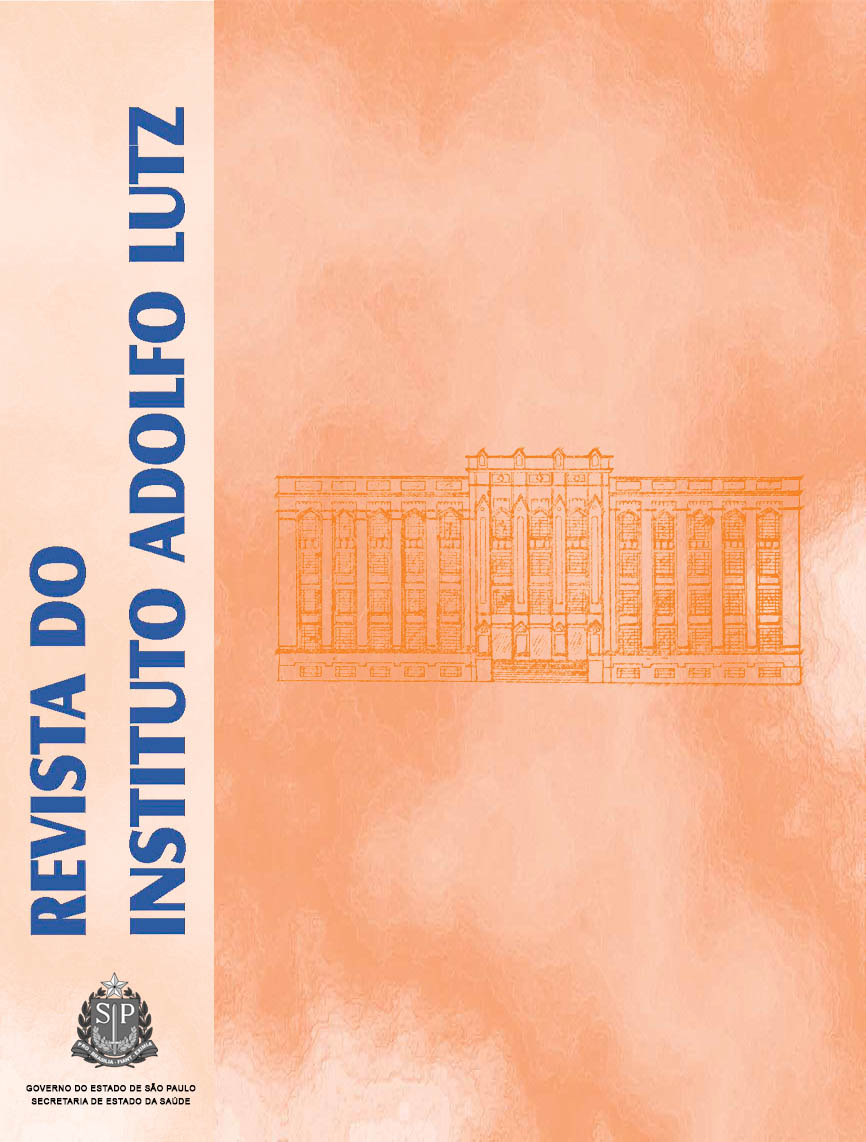Abstract
The purpose of this study was to describe the possible clinical and laboratorial alterations as well as its conceivable effects that could be attributed to organochlorine pesticides exposure in people living in open dumps sites in Pilões - Cubatão District, São Paulo State. This is an observatory study performed in the population of 238 inhabitants of Pilões , and in comparison to a control population of 258 people living in Cota 200. Foods from local growers were analyzed. Routine basic and specific laboratory exams and clinical evaluation were performed for diagnosis purpose, and organochlorine pesticides detection in blood serum samples were carried out. Hexachlorobenzene was the main organochlorinated substance found in foods at levels varying from 0.3 to 6120 µg/kg. Positive association was found between living in Pilões and the occurrence of organochlorine pesticides residues in blood serum. Hexachlorobenzene medium concentrations in blood serum were 115. 7, 20, and 4 times higher than HCB, pp' DDE, β and γ HCH, respectively, when compared to control group. The people living in Pilões showed statistically significant association between blood medium contents of high HCB levels and leucopeny ; between DDT and total HCH rates and altered clinical exams; between total DDT level and occurrence of circulatory system diseases; and between of total HCH level and presence of skin diseases. The data observed in the present study indicated the risk in getting diverse diseases on account of the exposure to organochlorinated pesticides. Owing to the poor health environments the Pilões population was transferred to live in another place.
References
1. [CETESB] Companhia de Tecnologia e Saneamento Ambiental. Boletins de Resultados de Análises. Jun. a set. (mimeografado), 1991
2. DAE/CETESB] Departamento de Águas e Energia Elétrica do Estado de São Paulo & Companhia de Tecnologia e Saneamento Ambiental. Resíduos sólidos industriais na bacia do rio Cubatão. São Paulo;ed.CETESB; 1978 2v.
3. Santos Filho, E. Determinação do grau de exposição interna aos praguicidas organoclorados, em população residente sobre aterro a céuaberto na localidade de Pilões, Cubatão – S.P. São Paulo; 1998. [Tesede Doutorado-Faculdade de Saúde Pública da Universidade de São Paulo].
4. Santos Filho, E. et al. Grau de exposição a praguicidas organoclorado sem moradores de aterro a céu aberto. Rev Saúde Pub 2003: 7 (4): 515-22.
5. Schafer, K.S & Kegley, S.E. Persistent toxic chemicals in the US foodsuply. J. Epidemiol. Community Health; 2002: 56 (11): 813-7.
6. Thompson, F ed. Manual of Analytical Methods for analysis of pesticide residues in human and environmental samples. U.S.A., Environmental Protection Agency, 1982
7. Steiwandter, H. Contributions to silica gel application in pesticide residue analysis III. An on-line method for extracting and isolating chlorinated hydrocarbon pesticides and polychlorinated biphenyls(PCB’s) from milk and dairy products. Fresenius Z Anal Chem, 1982,312: 342-5.
8. Siqueira, M.E.P.B. Fatores que afetam os resultados da monitorização biológica. In: Biomonitorização: indicadores e limites biológicos de exposição às substâncias químicas. São Paulo, ed.UNESP. 1994: 17-26.
9. Miller, O. & Gonçalves, R.R. Laboratório para o clínico. 8ª ed. Rio de Janeiro. ed. Atheneu, 1995.15- 1 Barretto, H.H.C.; Inomata, O.N.K;Lemes, V.R.R. Níveis de pesticidas organoclorados em gordura de frango, 1988-1991. Rev Inst Adolfo Lutz, 1992: 52 (1/2): 97-100.
10. Stehr-Green, P.A. Demographic and seasonal influences on humanser um pesticide residue levels. J Toxicol Environ Health 1989: 27:405-21.
11. Lara, W.H. & Barreto, H.H.C. Resíduos de pesticidas clorados em alimentos. Rev Inst Adolfo Lutz 1972: 32:89-94.
12. Waliszewski, S.M. et al.. Persistent organochlorine pesticide in Mexicanbutter. Food Addit Contam 2003: 20 (4): 361-7.
13. Duggan, R.E.; Bany, H.C.; Johnson, L.Y.,1967. Pesticide residues intotal diet samples (II). Pestic Monit J 1(2):2-12.
14. [FAO/WHO]. Food and Agriculture Organization of the United Nations/World Health Organization. Food Standards Programme Codex Alimentarius Commission. Washington, D.C., 2000 v.2B.
15. Barretto H.H.C.; Inomata, O.N.K.; Lemes, V.R.R. Níveis de pesticidas organoclorados em gordura de frango, 1988-1991. Rev Inst AdolfoLutz 1992: 52 (1/2): 97-100.
16. Hanaoka, T. et al., Residuals of beta-hexachloricyclohexane, dichlorodiphenyl-trichloroethane and hexachlorobenzene in serumand relationswith consumpition of dietary components in ruralresidents in Japan. Sci. Total Environ; 286 (1-3): 119 –27, 2002.
17. Hofmeister, V.A. Efeitos da poluição do ar sobre a função pulmonar: um estudo de coorte em crianças de Cubatão. São Paulo; 1991. [Tesede Doutorado apresentada a Faculdade de Saúde Publica da USP].
18. Subcommitte on Pesticides. Epidemiological Toxicology of Pesticide Exposure: report of an international workshop. Arch Environ Health 1972, 25: 399-405.

This work is licensed under a Creative Commons Attribution 4.0 International License.
Copyright (c) 2005 Instituto Adolfo Lutz Journal
